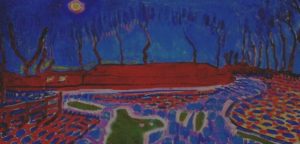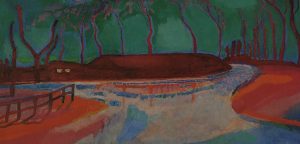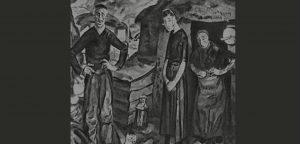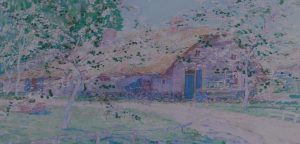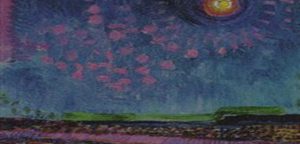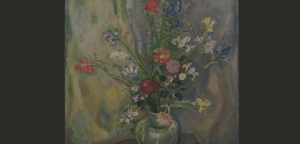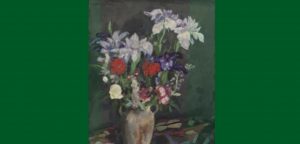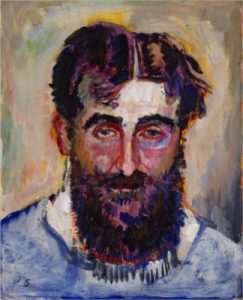Jan Sluijters was born on the 17th of December in 1881 in Hertogenbosch, The Netherlands.
1881 - 1957
Jan Sluijters
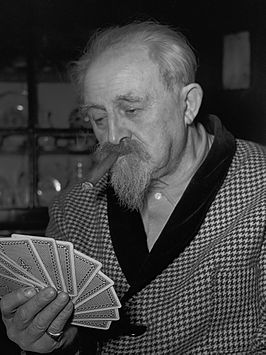
description
Jan (Johannes) Sluijters, was a Dutch artist an illustrator, poster master, a vivid representative of Expressionism.
His father was an illustrator and engraver and developed the artistic talent of the boy from early childhood. At the age of fourteen, the artist moved with his parents and sister to Amsterdam, the city in which he spent most of his life.
Johannes Sluijters was the pioneer of the Dutch avant-garde in general. Being at first rejected by conservative critics, but then winning a famous reputation among the public, in 1910, he together with Jan Toorop and other like-minded people founded a group of contemporary art that promoted avant-garde trends and opposed traditional academic canons in painting. Sluijters was also a member of the Association of Artists of The Hague and Amsterdam and was a member of the St. Lucas Society of Artists. Having received recognition in the second half of his career, the artist participated in many exhibitions throughout Europe and was a member of the jury of various competitions.
Key ideas:
– Jan Sluijters is known for his colorful paintings, executed in an energetic, bold manner and free technique. Being a universal artist, he changed his creative style several times during his career, trying new methods and ways of image, always saturating his pictures emotionally and remaining a strong colorist at the same time.
– In the landscapes of Sluijters, depicting mainly the surroundings of Amsterdam, one can trace his experiments with color and light in painting. The ancient streets and suburban landscapes are painted with bright points and spots of pure color, which merging form a single harmony and rhythm. These canvases are characterized by such a strong color saturation and abundance of light that the landscapes seem to be glowing from within.
– The artist depicted many views several times, applying various techniques and effects. He mostly painted sunrises and sunsets, which invariably delighted the painter with the richness of colors and subtle nuances of natural conditions.
– The artist also created many portraits and genre scenes. His favorite models were his family members, whom he depicted in his home environment, engaged in everyday affairs. Jan Sluijters created many portraits to order. Despite the fact that he depicted nature realistically without embellishment, and sometimes even harshly, his portraits enjoyed great popularity among the public.
– The artist created a large number of picturesque portraits of his contemporaries: artists, musicians, businessmen and politicians. These paintings are distinguished by the author’s sincerity and emotionality, his individual attitude towards the person depicted.
– At a later stage of his career, Sluijters gradually gave up bright, screaming colors. He began to use a soft, harmonious palette; his work acquired a quieter sound, while remaining the same expressive and original.
1881
1898
1904
1911
1915
1920
1927
1940
1950
1957
The birth of the artist
Entered the Art Academy in Amsterdam
Entered the Art Academy in Amsterdam. During his studies, he began to receive orders for the illustrations of periodicals and illustrated several books for children. Sluijters studied in the class of Nicolas van der Waay, and also attended the evening courses of Professor August Allebe in 1903. The artist’s early paintings are created in an academic style with the visible influence of Symbolism and Art Nouveau.
He was awarded the Roman Prize
He was awarded the Roman Prize, which helped him make a long study tour to Italy. Apart from Rome, the artist also visited Paris, where he got acquainted with the latest achievements in the field of fine arts. Sluijters was carried away by the creativity of post-Impressionists and Fauvists and created his first works in new for him styles.
Returned to Amsterdam
Having returned to Amsterdam, he worked actively on portraits, still lifes, landscapes. During this period, the individual style of the artist was finally formed; it was based on the use of a saturated color palette and the expressiveness of the presentation. The artist got acquainted with other Dutch avant-garde artists. He became a close friend of Piet Mondrian and Leo Gestel, with whom he was engaged in the popularization of contemporary painting in the Netherlands.
Settled in the provincial town of Staphorst
Settled in the provincial town of Staphorst. The artist’s work overcame significant changes, possibly related to the First World War, which he suffered very hard. The colors in Sluijters’ paintings of this period became darker and subdued. He chose everyday themes for his work, depicting peasants and their hard work in a fairly realistic style. The most famous painting of this period was the picture “Staphorst peasants”, created in 1917.
He painted many portraits and genre scenes
Returned to Amsterdam, where he gradually became a famous and sought-after artist. He painted many portraits and genre scenes depicting his family and their everyday activities. The paintings of Sluijters became more calm and restrained. He stopped his experiments with various art styles, working in an individual manner close to Expressionism.
The first personal exhibition of the artist at the Amsterdam city museum
The first personal exhibition of the artist at the Amsterdam city museum. The artist also took part in many collective exhibitions at home and abroad, became a member of the jury of various art competitions, received many orders for portraits. The master almost never left Amsterdam, working in a home studio. His family and home became the central themes of his paintings.
The artist's physical and mental health deteriorated
During the German occupation, he was in Amsterdam. The artist’s physical and mental health deteriorated so much that he was forced to stop painting for a while. After the war, Slater returned to his previous studies, but no longer engaged in public activities and did not create large-scale canvases.
He painted portraits of his children and grandchildren, interiors and still-lifes
He painted portraits of his children and grandchildren, interiors and still-lifes with flowers in a colorful decorative style.
The death
He passed away on 8th of May in 1957 in Amsterdam, The Netherlands.



